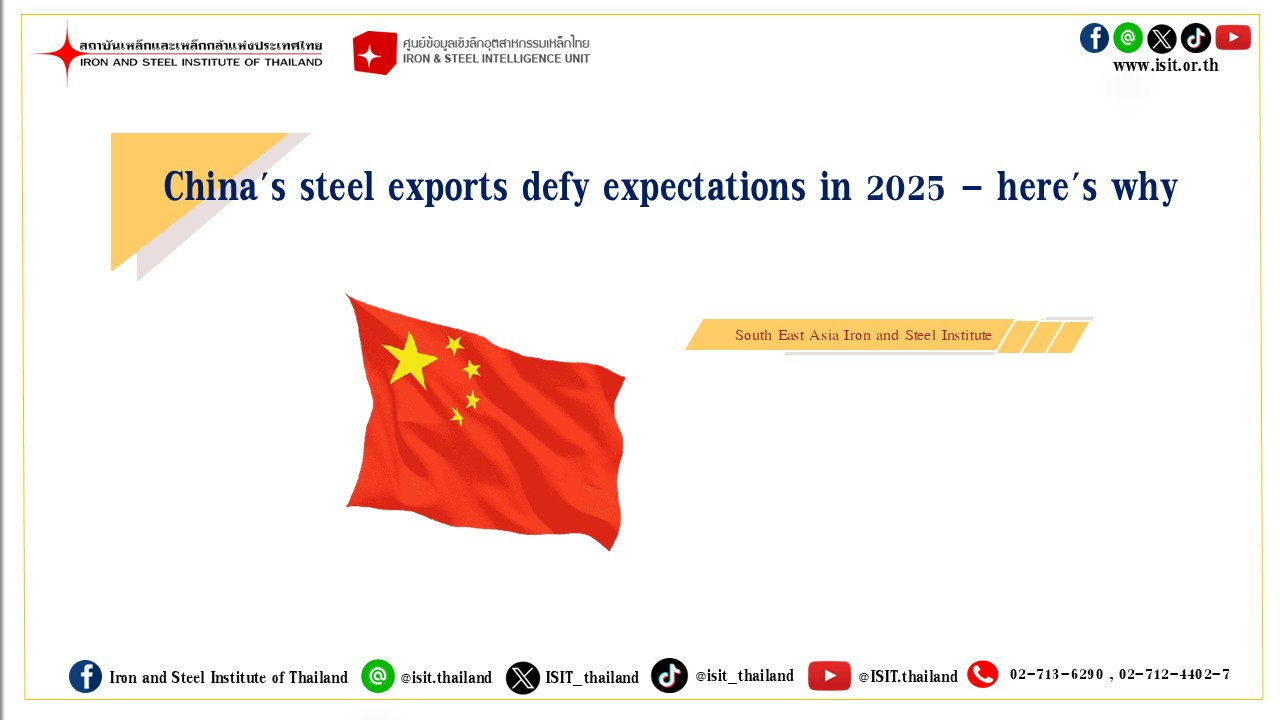
China's steel exports defy expectations in 2025 -- here's why
At the start of 2025, most industry analysts expected China’s steel exports to slow. Global headwinds including trade frictions, economic uncertainties, and geopolitical tension were expected to curb shipments. Yet, by September, China had shipped nearly 88 million tonnes of finished steel -- a 9.2% increase over the same period last year -- surprising many.
Front-loading shipments and strategic timing, A key factor behind the unexpected growth in China's steel exports has been proactive timing. Since late 2024, Chinese exporters anticipated higher tariffs and trade restrictions, moving large volumes overseas ahead of schedule.
When the U.S. imposed a 10% fentanyl‑-related tariff on certain Chinese imports effective February 4, and then raised it to 20% on March 4, Chinese exporters accelerated their shipments in anticipation of tighter trade control. The trend continued through summer, as they accelerated shipments in anticipation of stricter trade oversight from October.
Emerging markets as a buffer, While traditional markets have become increasingly restrictive, China's Belt and Road partners and other emerging economies have absorbed growing steel exports.
Southeast Asia, the Middle East, Africa and South America have all contributed to rising demand, often fueled by infrastructure projects and industrial expansion. In some cases, China's steel fills gaps in markets where local manufacturing remains underdeveloped, ensuring stable and sizable export flows.
Price competitiveness and product shifts, Price advantage remains another pillar. Despite tariffs in some countries and regions, Chinese steel products remain price competitive in Southeast Asia, the Middle East, and other emerging markets.
China's steel product mix has shifted as well. Billets, benefiting from zero tariffs under the Regional Comprehensive Economic Partnership, have become the main growth driver, with Chinese exporters sending billets to Southeast Asian mills for local processing or re-export.
High-value products such as coated sheets, plated sheets, electrical steel, and structural sections have also seen strong growth this year, reflecting a strategic move toward higher-value and specialized steel exports.
Meanwhile, traditional steel products like hot-rolled coils face challenges from rising anti-dumping measures, highlighting the evolving dynamics of the global steel market.
Risks and outlook, Despite the robust performance, challenges remain for China's steel exports. Billet exports provide a telling example.
The recent surge in billet shipments has been driven largely by cost advantages and tariff arbitrage, raising questions about sustainability. Large-scale exports of this energy-intensive semi-finished product could increase China's domestic energy consumption and carbon emissions, while heightening the risk of future trade frictions.
Hence, enhancing processing capacity and expanding the global presence of high value-added steel products will be crucial for overcoming current structural constraints.
Nonetheless, resilient demand from emerging markets, strategic front-loading, and a more diversified product mix suggest that China's steel exports are likely to remain steady through the rest of 2025, even as global manufacturing activity slows and domestic demand remains subdued.
For Chinese steel exporters, adaptability and timing continue to be critical advantages in an increasingly volatile global trade landscape.
-- South East Asia Iron and Steel Institute (SEAISI)